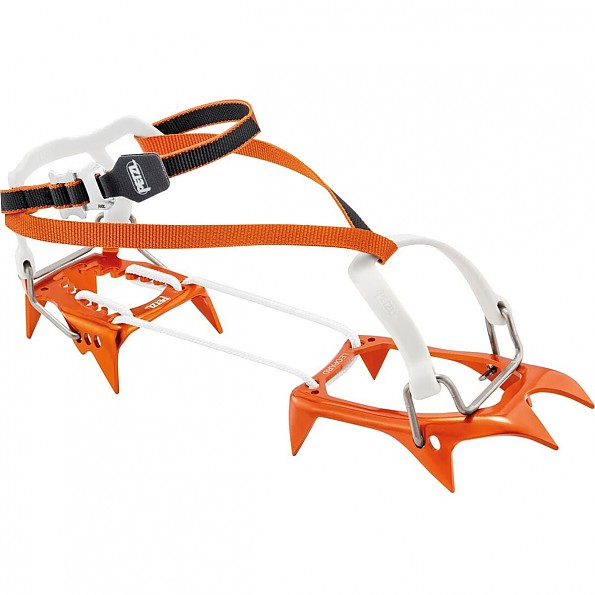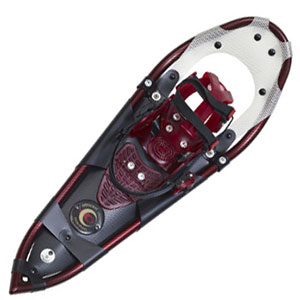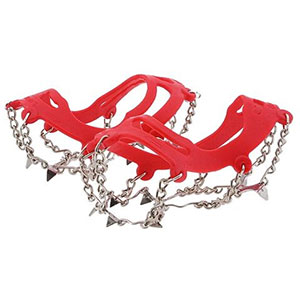Traction Devices
On This Page
Top Picks
How we choose: The best traction devices highlighted here were selected based on 244 reviews of 21 products. Our top picks are those that are readily-available in the United States and have received the highest overall ratings from reviewers.
How we test: Trailspace is powered entirely by our community of readers. The reviews posted here reflect the real-world experiences of outdoor enthusiasts just like you.
If you've used a traction device that you think should be listed here, please share your experience.
Disclosure: Trailspace never accepts payment for gear reviews, product placement, or editorial coverage. When you buy through affiliate links on our site, Trailspace may earn a small commission, which helps cover the costs of running the site.
Hillsound Trail Crampon
Nothing nano about these spikes. When the trail turns to ice and you need traction that will stick to it, the Hillsound Trail Crampon delivers. Flexible enough to fit a variety of footwear yet securely attached for serious terrain.
Reasons to Buy
- Long points on the cleats
- Easy on and off
- Sturdy hardware
- Flexibly fits to different size footwear
Reasons to Avoid
- No carry sack included
The Hillsound Trail Crampon combines great traction with a harness that is easy to use and functions well. This is a testament to their design, which clearly took into account the issues less well thought out crampons can bring. Snug secure fit even on less bulky boots. Ease of Use: Anyone who hikes in real winter conditions knows that moment when you feel the trail start to get icy and the question of whether it is worth the effort of stopping to put on the traction device you're carrying. For me, the Hillsound Trail Crampons have made that question much easier because they require so little effort to get into and out of.
Read more: Hillsound Trail Crampon reviews (14)
Kahtoola MICROspikes
2020 UPDATE: For 13 winters and counting I've relied on Kahtoola MicroSpikes traction devices to keep me upright while running on snowy and icy trails and camp roads. The 12 stainless steel cleats under each foot provide confidence-inspiring traction on hard pack, ice, and snow; the devices are straightforward to use and easy to get on over my trail-running shoes; a pair is lightweight and small enough to take along for just-in-case use; overall MicroSpikes are durable and well made. That said, the stainless steel cleats will dull over time, depending on how often they meet rocks and pavement. They do not replace crampons for technical hikes. In the right (or rather wrong) conditions, I occasionally get snowballs underfoot. While overall quite durable, my current pair suffered a break in its harness after two winters. MicroSpikes are an essential part of my winter running kit that I take for granted. I recommend them as a solid, dependable choice for other winter trail runners, hikers, and walkers.
Reasons to Buy
- Reliable, aggressive traction (the entire point...so to speak)
- Easy to put on and take off, even with cold hands and gloves
- Secure, stay in place once on
- Durable construction*
- Wide size range from Small (men's 5-8/women's 6-9) to XL (men's 14-16) fits most people and footwear (running shoes to hiking and winter boots)
Reasons to Avoid
- At $69 there are cheaper traction devices (but I think these are well worth it to stay upright)
- Won't stay sharp forever (not a con, just a fact)
- Occasional snowballing underfoot in warmer temps
- *Not indestructible, the harness on my current pair broke after two winters, but that was due to a temporary quality issue which Kahtoola says has been resolved.
Overview I received my first pair of Kahtoola MicroSpikes way back in the winter of 2007-08, and quickly became a convert to the new, stretchy, red traction devices. I'm now on at least my fourth pair and have run and walked thousands of icy, snowy, winter miles with MicroSpikes underfoot. MicroSpikes are super rugged, burly, and easy to use. Not only do they inspire confidence from the get-go, they deliver. I've recommended them to many people and bought pairs for myself and family members.
Read more: Kahtoola MICROspikes reviews (38)
Hillsound Trail Crampon Ultra
The Hillsound Trail Crampon Ultras are a really well made product that performs well on icy trails. These type of trail crampons really enable you to enjoy hiking whenever your favorite trails are icy and are really great to have and share with a friend to give them a little greater confidence in following you out on an icy springtime hike.
Reasons to Buy
- Good design
- Easy and quick to put on and take off
- Each size can be used on a wide size range of boots and shoes
Reasons to Avoid
- Unsure of the durability of the rubber element of the design
I have had a pair of these Hillsound Trail Crampon Ultras and also a pair of the Hillsound FreeSteps6 and found them a great addition to my pack and have really enjoyed using them while hiking when trail conditions can be challenging. My medium pair of Hillsound Trail Crampon Ultras weigh 15.9 ounces with the storage bag included and 14.8 ounces without. The storage bag is made from a heavy weight nylon that the crampon points will not poke through when the bag with the crampons are stored in your pack.
Read more: Hillsound Trail Crampon Ultra reviews (15)
Snowline Chainsen Pro
The best ice traction pull-ons I have found so far, much tougher than the others. A notch or two shy of crampons in a packable size and weight.
Reasons to Buy
- Tough construction
- Easy on and off
- Solid grip on the worst ice
Reasons to Avoid
- How long will they hold up? Time will tell...
The roads, sidewalks, and trails can get seriously icy here in Trondheim, with at least two consequences: an upsurge in emergency room visits (our neighbor actually broke her femur taking her son across the street to the school bus), and brisk sales in all kinds of traction devices (brodder in Norwegian). The cheapest and most common type have studs set in relatively thin rubber that stretches over the bottom and sides of your shoes. They don't always grip well, and usually the studs falclout or the rubber tears before too long.
Read more: Snowline Chainsen Pro reviews (2)
Yaktrax Diamond Grip
My first impression of these was that I had accidentally bought some medieval torture device. Spiked beads are threaded on steel cables to make up the "chains" on the soles of these, all held on with thick black rubber. Some users may have painful flashbacks from that scary girlfriend they had in college. These are the Hummer H1 of traction devices, tough and overbuilt. The link chains that hold the soles to the rubber welt are even welded at the seams. I have had Yaktraks and other similar devices and they all failed because the rubber parts touch the ground and wear through.
Read more: Yaktrax Diamond Grip reviews (3)
Yaktrax Chains
Great ice traction devices that does not cost too much. Best used for icy streets or light snow.
Reasons to Buy
- Easy to put on
- Lighweight
- Inexpensive
Reasons to Avoid
- Slips on hard ice
- Lacks spikes
I recently purchased a pair of Kako IceTrekker Chains to use for my backpacking trip last weekend. I was able to fully test the chains due to the varying snow conditions I encountered on my trip. I have to say that these chains were very easy to put on and it remained nice and snug through out the day. Once it was on, it didn't require any adjustments. Some of the features are... Case-hardened steel links bite into snow for exceptional grip in all directions; suitable for all snow conditions including packed and crusty surfaces Rubber shoe harness secures easily and ensures a snug, responsive fit even in frigid conditions; rubber remains flexible in subzero temps Weighs only 12 oz.
Read more: Yaktrax Chains reviews (2)
Kahtoola NANOspikes
Nanospikes are a super versatile traction device that work on snow, ice, rocks, and pavement.
Reasons to Buy
- Ultra versatile
- Works on snow and ice
- Works on rocks and pavement
- Small spikes can't bend or break
- Work for running
Reasons to Avoid
- Not as effective as Microspikes in deep snow/steep icy slopes
- Front plate slides forward slightly
I purchased these for hiking in Colorado in the winter. I wanted a traction device that would allow me to go back and forth between snow/ice and rocks/dirt. Nanospikes fit the bill perfectly. I never slip, even on solid ice (though I do make sure my foot is firmly planted with each step, to set the spikes.) My traction on rocks and pavement is unaffected, and I also appreciate that these tiny tungsten carbide studs can't bend or break on rocks like every other traction device out there. In fact, these studs break the rocks instead. Another benefit is that you can run with these on, and I've done so very successfully. Last of all, Nanospikes stay firmly wrapped around your shoe, and they can't fall off like Yaktrax.
Read more: Kahtoola NANOspikes reviews (4)
Icespike Shoe Spikes Package
Living in Estes Park, CO, near RMNP, is a trail runner’s paradise. Huge variety of trails over varying terrain with majestic views of the Rocky Mountains. The only drawback is that once Winter sets in and the snows arrive, running on trails, or even roads at times, can get sketchy. I’d been using YakTrax since coming here – while they work reasonably well, I’d had issues with the rubber base coming off my shoes multiple times, and then the rubber snapping while out on trail. Only answer was to buy another pair! I’d heard of runners using hex screws in the soles of their shoes, but hadn’t been brave enough to give that a try.
Read more: Icespike Shoe Spikes Package review (1)
DIY: Sheet Metal Screws
This has been my preferred solution for winter running for 20 years. There is nothing special about the "kits" of screws being sold for $20 in stores. They are selling you 50 cents worth of screws for $20. Go to a hardware store. Ask for 3/8" or 1/2" galvanized (or stainless if you want to splurge) sheet metal screws Get a box of 100 (that lasts me about 3 years) Take your running shoes (or any rubber soled boot for that matter) Drill very small (< 1/16") pilot holes in 15 to 20 raised studs on the sole of each shoe Use a 1/4" socket or screw driver to drive the screws into the holes Putting a dab of glue on the screws will help keep them in longer and seal the holes They will fall out through the season so replace as needed (hence...
Read more: DIY: Sheet Metal Screws reviews (2)
Hillsound Cypress6
I do a lot of winter mountain hiking on the Appalachian Trail/Vermont Long Trail. Trail conditions range widely from packed powder snow to wet snow to heavy crust to sheet ice, sometimes all of the above in one hike depending on elevation gained. If the trail is already packed and I don’t need snowshoes to break trail on new snow, some form of light trail crampon is far superior to clunking around in snowshoes. Over the past 5 years I’ve tried to find a light trail crampon for winter trekking.
Read more: Hillsound Cypress6 reviews (2)
More Reviews of Traction Devices
Trailspace reviewers have shared 244 reviews of 21 different traction devices.
or add yours
Other Types of Winter Traction
Find more winter traction reviewed in these related categories:

Crampons

Snowshoes

all Winter Traction
Review Your Outdoor Gear
If you've found this site helpful — or if we've missed something important — please consider paying it forward by some of your favorite outdoor gear.
Why? From professional gearheads to outdoor novices, everyone has an important point of view to contribute. will support the outdoor community and help others find the best gear.
Trailspace reviewers are outdoor enthusiasts like you: hikers, climbers, paddlers, backcountry skiers, and trail runners who share our experiences with the gear and clothing we rely on to get outside. Learn more about Trailspace



